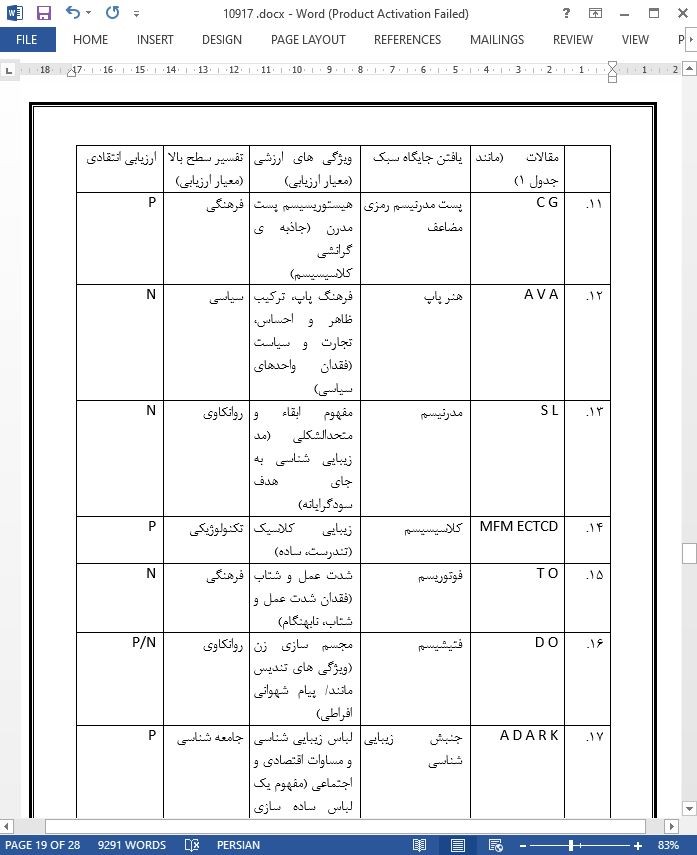
آیا مد هنر است؟
مد به عنوان شاخه ای از مباحثات از اواخر قرن نوزدهم توجه پژوهشگران را به خود جلب کرده است. محققان در بسیاری از تحقیقات برجسته روی نظریه های مختلف مد در رابطه با موارد اجتماعی، روان شناختی و اقتصادی تمرکز کرده اند. عناوین گفته شده شامل تاریخ جامه های محلی، تحقیق در حوزه ی رفتار و کالاهای تجارتیِ مد که خود شامل بازاریابی و تبلیغات است، می باشند. آن ها اغلب عوامل و مفاهیم تاریخی ای که روی پدیده ی مد تأثیر می گذارند را بررسی می کنند تا بفهمند افراد با پیروی از مد چه نوع حس خشنودی را تجربه می کنند، چرا تاوان این حس خشنودی قربانی شدن فیزیکی و اقتصادی است و لباس های مد روز چه طور می توانند تبدیل به کالاهای سودآور شوند.
اما می توان استدلال کرد چیزی که در مطالعات مد به شکلی قابل توجه نادیده گرفته شده، مهم ترین ویژگی مد، یعنی "زیبایی شناسی" است. همان طور که تاریخ نگار هنر آن هولندر (Anne Hollander) اشاره کرده، بخش ضروری پوشاک اثر بصری آن است و "همه ی ملاحظات دیگر وابسته به موقعیت و شرطی هستند" (Hollander 1978: 311). جامعه شناس الیزابث ویلسون نیز (Elizabeth Wilson) با نظریه ی هولندر موافقت کرده و تأکید کرده که ما باید مد را به عنوان "شکلی از هنر بصری، ساخت تصاویر با جنبه ی بصری به عنوان رسانه" ببینیم (Wilson 1987: 9). علاوه بر آن، جورج بی اسپرولز (George B. Sproles) دانشمند معروف حوزه ی رفتار اظهار کرده است: "هنگام تحلیل مد رویکردهای زیبایی شناسی به آسانی نادیده گرفته می شوند، چرا که تصور می شود زیبایی شناسی مربوط به مطالعات هنری است، نه مد. این یک اهمال جدی است، زیرا مد شامل محصولات زیبایی شناسی است و هر نظریه ی مربوط به مد لزوما شامل اجزاء زیبایی شناسی است" (Sproles 1958: 63).
دسته های شناسایی شده از تفسیر سطح بالا (روانکاوی، فرهنگی، جامعه شناسی، سیاسی، تکنولوژیکی و اقتصادی) مشابه اصول کمکی نقد هنر پست مدرن از هاوارد اسماگولا (Howard Smagula) (جامعه شناسی، سیاسی، طرفدار حقوق زنان، روانکاوی، پسا ساختارگرا، نژادشناسی و اقتصاد) (Smagula 1991: 1) و عوامل خارجی زمینه ی زیبایی شناسی از آرنولد برلینت (Arnold Berlint) (زیست شناسی، روان شناسی، ماده/ تکنولوژیکی، تاریخی و اجتماعی/ فرهنگی) بودند (Berleant 1970: 74-90). طی تحلیل نوشته های مد دیدگاه های انتقادی مختلفی در رابطه با پست مدرن یافت شد. همان طور که سبک نوشته ها نشان می دهد، نویسندگان استفاده از اصطلاحات و دسته های پست مدرن در نقد را تفسیر کردند. هم چنین پیشنهاد می شود عواملی که زمانی به عنوان عوامل خارجی حوزه ی زیبایی شناسی در نظر گرفته شده بودند، حال به اندازه ی زیبایی شناسی صوری در تفاسیر کالاها و رویدادهای مد مورد تأکید قرار می گیرند. این نشان می دهد که مفاهیم پست مدرن مد گرایشی به سمت رویکرد میان رشته ای دارد تا اَشکال و شیوه های مختلف زیبایی شناسی را دربربگیرد و تجربه ی انسان را با شیوه ای مانند هنر پست مدرن غنی سازد. به نظر می رسد که به خاطر گسترش یافتن مفاهیم مد و هنر، مد تبدیل به موضوعی قابل تشخیص در دنیای هنر پست مدرن شده است.
Fashion as a category of discourse has been attracting scholars’ attention since the late nineteenth century. In many prominent studies, researchers have focused on various social, psychological, and economic theories of fashion. Topics addressed include costume history, behavioral research, and fashion merchandising, together with marketing and advertising. They often examine the forces and historical contexts driving fashion phenomena to find out what satisfaction people derive from their obedience to fashion, why this satisfaction compensates for physical and economic sacrifice, and how fashionable clothing can be transformed into profitable commodities.
What has been most notably overlooked in fashion research, however, is arguably fashion’s most important feature, namely, “the aesthetic.” As the art historian Anne Hollander has pointed out, the essential aspect of clothing is its visual impact and “all other considerations are occasional and conditional” (Hollander 1978: 311). Agreeing with Hollander’s notion, the sociologist Elizabeth Wilson has also emphasized that we should see fashion as “a form of visual art, a creation of images with the visible self as its medium” (Wilson 1987: 9). Moreover, George B. Sproles, the well-known behavioral scientist, has asserted the following: “The approaches of the aesthetician are easily overlooked when analyzing fashion, since aesthetics is thought of as the study of art, not fashion. This is a serious oversight, for fashions are aesthetic products and any theory of fashion will necessarily include aesthetic components” (Sproles 1985: 63).
The identified categories of high-level interpretation (psychoanalytic, cultural, sociological, political, technological, and economic) were similar to Howard Smagula’s seven guiding principles of postmodern art criticism (sociological, political, feminist, psychoanalytic, poststructuralist, ethnological, and economic) (Smagula 1991: 1) and to Arnold Berleant’s external factors of the aesthetic field (biological, psychological, material/technological, historical, and social/cultural) (Berleant 1970: 74–90). In the analyses of the fashion writings, various postmodern critical viewpoints were found. As the language of the writings demonstrated, the authors reflected the use of postmodern terminology and categories of criticism. It is also suggested that the factors once regarded as external to the aesthetic domain are now emphasized as much as formal aesthetics in interpretations of fashion objects and events. This indicates that postmodern concepts of fashion tend toward an interdisciplinary approach so as to embrace diverse aesthetic forms and practices that enrich human experience in the same way as postmodern art. It seems that fashion has become a recognizable subject within the postmodern artworld as a result of broadened conceptions of fashion and art.

آیا مد هنر است؟
تصدیق نقد زیبایی شناسی مربوط به مد
Is Fashion Art?
Grounding Aesthetic Criticism of Fashion
- ترجمه فارسی مقاله با فرمت ورد (word) با قابلیت ویرایش، بدون آرم سایت ای ترجمه
- ترجمه فارسی مقاله با فرمت pdf، بدون آرم سایت ای ترجمه
